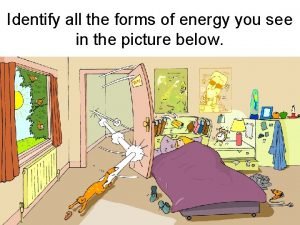Parkinsons Disease 4222004 1 Illustrations from Principles of


![Articles on B. G. , STN, & Parkinson’s [1] D. Terman, J. Rubin, A. Articles on B. G. , STN, & Parkinson’s [1] D. Terman, J. Rubin, A.](https://slidetodoc.com/presentation_image/ca3dd45148caebd083a7c081e2b97f80/image-3.jpg)
![Articles on B. G. , STN, & Parkinson’s [3] A. Raz, E. Vaadia, and Articles on B. G. , STN, & Parkinson’s [3] A. Raz, E. Vaadia, and](https://slidetodoc.com/presentation_image/ca3dd45148caebd083a7c081e2b97f80/image-4.jpg)
![[1] Dependence on internal Ca 2+ In pituitary gonadotropes, Gn. RH induces rhythmic oscillations [1] Dependence on internal Ca 2+ In pituitary gonadotropes, Gn. RH induces rhythmic oscillations](https://slidetodoc.com/presentation_image/ca3dd45148caebd083a7c081e2b97f80/image-5.jpg)
![[1], Figure 1, page 82 4/22/2004 6 [1], Figure 1, page 82 4/22/2004 6](https://slidetodoc.com/presentation_image/ca3dd45148caebd083a7c081e2b97f80/image-6.jpg)

![[1] Conclusions Hormone stimulated exocytosis is tightly coupled to an oscillatory release of Ca [1] Conclusions Hormone stimulated exocytosis is tightly coupled to an oscillatory release of Ca](https://slidetodoc.com/presentation_image/ca3dd45148caebd083a7c081e2b97f80/image-8.jpg)
![[2] Local / global changes in [Ca ]i 2+ Depending on the spatial relationship [2] Local / global changes in [Ca ]i 2+ Depending on the spatial relationship](https://slidetodoc.com/presentation_image/ca3dd45148caebd083a7c081e2b97f80/image-9.jpg)


![[2], Figure 1, page 863 4/22/2004 12 [2], Figure 1, page 863 4/22/2004 12](https://slidetodoc.com/presentation_image/ca3dd45148caebd083a7c081e2b97f80/image-12.jpg)

- Slides: 13

Parkinson’s Disease 4/22/2004 1

Illustrations from Principles of Neural Science by E. R. Kandel, J. H. Schwartz, and T. M. Jessell Mc. Graw-Hill, Fourth Edition, 2000 (Chapter 43) Figure 43 -1 p. 854 Signaling between BG and other parts Figure 43 -2 p. 855 Basal ganglia and nearby structures Figure 43 -6 p. 861 Circuitry in the system Figure 43 -7 p. 863 Surgical interventions 4/22/2004 2
![Articles on B G STN Parkinsons 1 D Terman J Rubin A Articles on B. G. , STN, & Parkinson’s [1] D. Terman, J. Rubin, A.](https://slidetodoc.com/presentation_image/ca3dd45148caebd083a7c081e2b97f80/image-3.jpg)
Articles on B. G. , STN, & Parkinson’s [1] D. Terman, J. Rubin, A. C. Yew, and C. J. Wilson, Activitiy patterns in a model of the subthalamopallidal network of the basal ganglia, J. Neurosci. 22: 2963 -2976, 2002. [2] D. Plenz and S. T. Kitai, A basal pacemaker formed by the subthalamic nucleus and the external globus pallidus, Nature 400: 677 -682, 1999. 4/22/2004 3
![Articles on B G STN Parkinsons 3 A Raz E Vaadia and Articles on B. G. , STN, & Parkinson’s [3] A. Raz, E. Vaadia, and](https://slidetodoc.com/presentation_image/ca3dd45148caebd083a7c081e2b97f80/image-4.jpg)
Articles on B. G. , STN, & Parkinson’s [3] A. Raz, E. Vaadia, and H. Bergman, Firing patterns and correlations of spontaneous discharge of pallidal neurons…. , J. Neurosci. 20: 8559 -8571, 2000. [4] P. Brown, A. Oliviero, P. Mazzone, A. Isola, P. Tonali, and V. Di. Lazzaro, Dopamine dependency of oscillations between subthalamic nucleus and pallidum in Parkinson’s disease, J. Neurosci. 21: 1033 -1038, 2001. 4/22/2004 4
![1 Dependence on internal Ca 2 In pituitary gonadotropes Gn RH induces rhythmic oscillations [1] Dependence on internal Ca 2+ In pituitary gonadotropes, Gn. RH induces rhythmic oscillations](https://slidetodoc.com/presentation_image/ca3dd45148caebd083a7c081e2b97f80/image-5.jpg)
[1] Dependence on internal Ca 2+ In pituitary gonadotropes, Gn. RH induces rhythmic oscillations in Ca 2+ concentrations. These oscillations trigger exocytosis, releasing LH and FSH into the circulatory system. Where is the calcium that triggers the exocytosis coming from? Does each increase in [Ca 2+]i trigger exocytosis? In [1], Tse, et al. , used high temporal resolution capacitance measurements to monitor cell membrane capacitance, DCm , and measure [Ca 2+]i and DCm simultaneously. 4/22/2004 5
![1 Figure 1 page 82 4222004 6 [1], Figure 1, page 82 4/22/2004 6](https://slidetodoc.com/presentation_image/ca3dd45148caebd083a7c081e2b97f80/image-6.jpg)
[1], Figure 1, page 82 4/22/2004 6

Based on micrographs by others, they estimate about 10, 000 secretory vesicles in a single rat gonadotrope, of which 6001000 are within a vesicle diameter of the cell membrane. They estimate that more than 540 vesicles were released in a single 10 -second application of Gn. HR. Increase in [Ca 2+]i is necessary for exocytosis: application of Gn. RH when the Ca 2+ is chelated does not produce exocytosis. Exocytosis did occur when caged photolysis of IP 3 triggered [Ca 2+]i without presence of Gn. RH. When extracellular Ca 2+ was removed, application of Gn. RH still produced both [Ca 2+]i oscillations and exocytosis. 4/22/2004 7
![1 Conclusions Hormone stimulated exocytosis is tightly coupled to an oscillatory release of Ca [1] Conclusions Hormone stimulated exocytosis is tightly coupled to an oscillatory release of Ca](https://slidetodoc.com/presentation_image/ca3dd45148caebd083a7c081e2b97f80/image-8.jpg)
[1] Conclusions Hormone stimulated exocytosis is tightly coupled to an oscillatory release of Ca 2+ from intracellular stores that leads to micromolar increases in [Ca 2+]i Each increase in [Ca 2+]i can result in a burst of exocytosis Propose that each [Ca 2+]i elevation rapidly releases the most readily available vesicles, others are mobilized during the decrease of [Ca 2+]i Oscillations of [Ca 2+]i have the advantage of reducing toxic effects of high [Ca 2+]i yet maintaining a secretory output comparable to sustained elevation of [Ca 2+]i 4/22/2004 8
![2 Local global changes in Ca i 2 Depending on the spatial relationship [2] Local / global changes in [Ca ]i 2+ Depending on the spatial relationship](https://slidetodoc.com/presentation_image/ca3dd45148caebd083a7c081e2b97f80/image-9.jpg)
[2] Local / global changes in [Ca ]i 2+ Depending on the spatial relationship between the intracellular stores of Ca 2+ and the site of the exocytosis, the Ca 2+ signal can be very local or spread through the entire cell. During physiological stimulation, the average concentration of the intracellular Ca 2+, [Ca 2+]i seldom rises beyond a few m. M, but in exocytosis, the local concentration may rise to tens or hundreds of m. M. While formerly believed to not be the case for release of Ca 2+ from intracellular stores, this point of view is no longer tenable. 4/22/2004 9

First, more sensitive imaging has detected a local gradient during release of Ca 2+ from intracellular stores. Second, new studies of Ca 2+ dependence of exocytosis show that low levels of [Ca 2+]i are insufficient to trigger exocytosis. intracellular stores. Pancreatic acinar cells, pituitary gonadotropes, and pituitary corticotropes behave differently in the dependence on local gradients of [Ca 2+]i for exocytosis. 4/22/2004 10

When stimulated by Gn. RH, the anterior pituitary gland secretes the reproductive hormones LH and FSH. The Gn. RH acts via a G-protein coupled receptor stimulating the release of Ca 2+ from IP 3 sensitive stores. The peak [Ca 2+]i reaches 1 to 3 m. M and exocytosis begins to occur when [Ca 2+]i reaches. 03 m. M and each burst of Ca 2+ triggers a burst of exocytosis. By using the photolysis of caged IP 3 to trigger the release of the Ca 2+, it is possible to more closely follow the rate of exocytosis. 4/22/2004 11
![2 Figure 1 page 863 4222004 12 [2], Figure 1, page 863 4/22/2004 12](https://slidetodoc.com/presentation_image/ca3dd45148caebd083a7c081e2b97f80/image-12.jpg)
[2], Figure 1, page 863 4/22/2004 12

The study provides evidence that in the pituitary gonadotropes, the IP 3 sensitive stores are probably quite close to the sites of exocytosis. The fact that the rate of exocytosis falls before the peak of the [Ca 2+]i is probably due to the dissipation of the Ca 2+ away from the site of exocytosis as the SERCA pumps start to operate before the more general [Ca 2+]i has peaked. Since the residual Ca 2+ must be cleared before a second increase can begin, which expends energy in the form of ATP to fuel the SERCA pumps, this may lead to a more energy efficient mechanism for hormone secretion. 4/22/2004 13
 Basal ganglia
Basal ganglia Parkinsons disease
Parkinsons disease Shy drager syndrome
Shy drager syndrome Rectosigmoid junction
Rectosigmoid junction Amantadin
Amantadin Behcet disease wikipedia
Behcet disease wikipedia Bharathi viswanathan
Bharathi viswanathan Heading text feature
Heading text feature Facts about patricia polacco
Facts about patricia polacco Chris van allsburg illustrations
Chris van allsburg illustrations List of books by chris van allsburg
List of books by chris van allsburg Car energy conversion
Car energy conversion Text features
Text features What drove away the swomee-swans?
What drove away the swomee-swans?
























